In the world of automobiles, the way a car commands attention or slips unnoticed is a fascinating reflection of not only its design and performance but also broader cultural and psychological factors. Cars have long been more than just transportation; they are symbols of identity, status, and lifestyle.
Some vehicles turn heads effortlessly the moment they enter a parking lot or cruise down a boulevard, while others blend into the urban tapestry, seen but rarely admired.
This dynamic plays out across every segment of the automotive landscape, from ultra-luxury supercars to humble city compacts. The reasons behind why certain cars get attention and others are ignored are complex and multifaceted, involving aesthetics, brand perception, engineering excellence, and even social trends.
Understanding which cars command attention everywhere and why they do so offers intriguing insights into how automotive design and marketing intersect with human psychology. People are naturally drawn to bold statements and striking visuals, whether that’s the aggressive stance of a supercar or the rugged charm of an off-road icon.
These vehicles become cultural touchstones, instantly recognizable and often celebrated not only by car enthusiasts but also by the general public. The effect is almost primal—cars that evoke emotion, excitement, or curiosity compel onlookers to stop, stare, and sometimes even photograph or discuss them.
These attention-grabbing cars become part of social conversations and memories, elevating their owners’ presence in public spaces.
Conversely, there are cars that serve essential, practical roles yet rarely receive much attention. These vehicles tend to prioritize efficiency, affordability, and functionality over flashiness or performance. Their designs are often utilitarian and subdued, crafted to fulfill needs without demanding recognition.
While they may excel in providing reliable, economical transportation, their understated nature means they frequently go unnoticed or even unappreciated in crowded parking lots or bustling streets.
This invisibility is not always a negative; for some drivers, blending in or avoiding unwanted attention is desirable. However, it is undeniable that these cars often struggle to generate the same enthusiasm or respect from the wider public or automotive community.
This article explores this fascinating contrast by highlighting five cars that get attention everywhere and five cars that typically get ignored. The “attention magnets” include high-performance supercars, uniquely designed electric trucks, timeless sports cars, and rugged off-roaders—vehicles that capture imaginations and command respect.
On the flip side, the “ignored” group consists of practical, budget-friendly compacts and subcompacts that do their job silently and efficiently but rarely inspire admiration or excitement.
By examining both sides, we gain a deeper appreciation for how design, performance, heritage, and cultural resonance shape the way cars are perceived and valued.
Whether you’re a car enthusiast fascinated by engineering marvels or a casual observer curious about why some cars turn heads while others fade into the background, this analysis offers a compelling look into automotive sociology.
It reveals how cars can embody personality, ambition, and societal values, and why, in a world full of vehicles, some shine brightly while others simply serve quietly.
As we dive into the specifics of these ten vehicles, we’ll uncover not only what makes them stand out or blend in but also what this means about our relationship with cars and the roles they play in our lives.
Also Read: 5 Cars Thieves Can’t Crack and 5 That Get Stolen With a Laptop
5 Cars That Get Attention Everywhere

1. Lamborghini Aventador
Few cars in the world have the raw power and presence of the Lamborghini Aventador, a masterpiece that turns heads wherever it appears. From its launch, the Aventador has been synonymous with extreme performance, jaw-dropping design, and exclusivity.
Its sharp, angular lines cut through the air like a finely honed blade, creating a silhouette that is instantly recognizable and impossible to ignore.The Aventador is not just a car; it is a statement of intent.
Its design language screams aggression and confidence, with every contour and vent purposefully sculpted to enhance aerodynamics and cooling for its monstrous V12 engine. This combination of form and function creates a vehicle that appears to be perpetually in motion, even when standing still.
The iconic scissor doors, which lift dramatically upwards rather than swinging out, add to its theatrical appeal, inviting curious onlookers to take a closer look and admire its craftsmanship.
Beyond its striking looks, the Aventador boasts a naturally aspirated 6.5-liter V12 engine capable of producing over 700 horsepower, providing not only eye-catching aesthetics but also spine-tingling performance.
The roar of this engine is unmistakable, a guttural growl that announces the arrival of automotive royalty. It’s this symphony of sound combined with aggressive styling that ensures the Aventador draws attention from car enthusiasts, casual fans, and even passersby who might not ordinarily care about supercars.
When one cruises through a city or speeds down a highway, it commands space and respect, making it a spectacle on wheels. The Aventador is not just seen; it is felt—an immersive experience for anyone fortunate enough to witness it in person.
The cultural significance of the Aventador further amplifies its ability to capture attention. Lamborghini is a brand steeped in history, passion, and innovation, often associated with success, excess, and bold individuality. This vehicle represents more than just speed or luxury; it embodies a lifestyle characterized by fearless expression and a desire to stand out.
Whether it’s parked outside a high-end restaurant, showcased at an exotic car gathering, or simply driving past onlookers, the Aventador draws cameras and admiration like a magnet. It serves as an aspirational icon for those who dream of pushing limits and defying convention.
Moreover, the Aventador maintains its allure by continually evolving without losing its essence. Lamborghini’s commitment to cutting-edge technology, refined aerodynamics, and bespoke customization options means that every Aventador is unique and tailored to its owner’s personality.
This exclusivity only heightens the car’s appeal, as it ensures that sightings remain rare and special. In essence, the Lamborghini Aventador is not just a car that gets attention—it commands it through an intoxicating blend of design, performance, heritage, and exclusivity, solidifying its place as one of the most captivating vehicles on the planet.
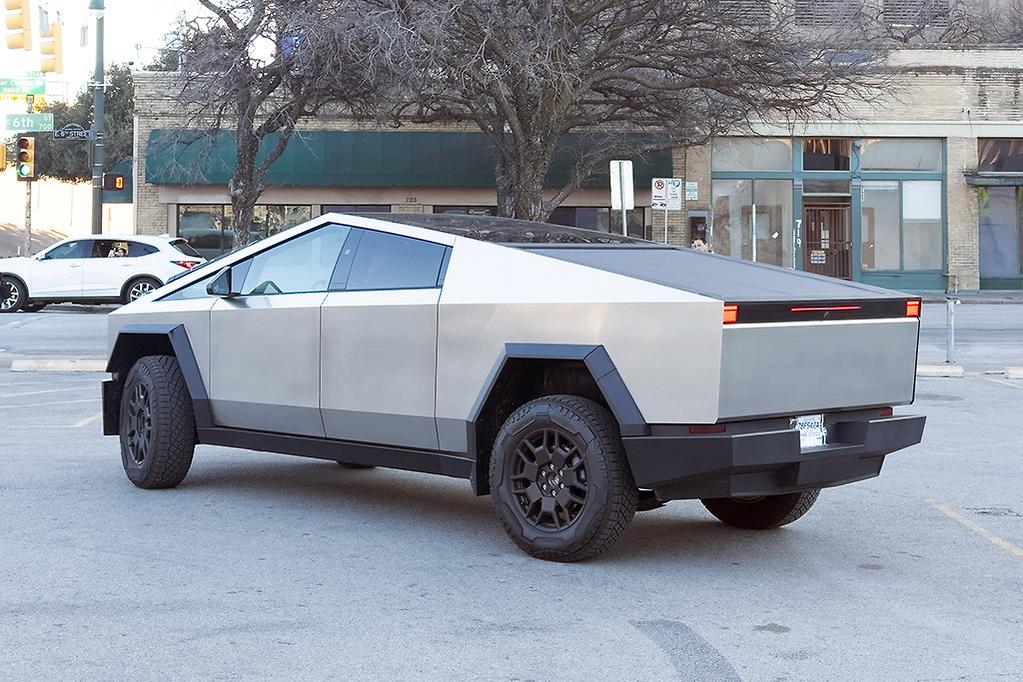
2. Tesla Cybertruck
The Tesla Cybertruck is arguably one of the most polarizing yet attention-grabbing vehicles in recent automotive history. From the moment Elon Musk unveiled its bold, polygonal stainless steel design, it shattered expectations about what a pickup truck should look like.
The Cybertruck’s exterior defies all conventional design principles with its sharp, geometric panels and minimalist aesthetic, resembling a futuristic armored vehicle rather than a traditional truck.
This radically unconventional styling ensures it turns heads wherever it goes—whether on urban streets, highways, or rural landscapes—eliciting reactions ranging from awe and curiosity to skepticism and surprise. In an automotive world dominated by smooth curves and aggressive muscular lines, the Cybertruck stands apart as an unapologetic iconoclast.
This unique design is not merely for show; it reflects Tesla’s vision of durability and innovation. The exoskeleton’s ultra-hard 30X cold-rolled stainless steel panels are engineered for strength and resilience, promising a level of durability uncommon in the pickup market.
The vehicle’s bulletproof capabilities, combined with armored glass (though famously cracked during its live demonstration), add to its mystique and futuristic appeal.
The Cybertruck redefines the concept of toughness through the lens of technology and sustainability, attracting attention not only from automotive enthusiasts but also from tech aficionados and environmentalists intrigued by its all-electric powertrain and innovative features.
Performance-wise, the Cybertruck offers impressive specs that match its audacious looks. With tri-motor all-wheel drive variants boasting over 800 horsepower and a towing capacity that rivals or exceeds traditional pickups, it delivers a compelling combination of brute force and green technology.
This duality makes it a symbol of the future of utility vehicles—one where power and sustainability coexist. As a result, the Cybertruck has become a conversation starter, often sparking debates on design, technology, and the future of transportation in urban and rural settings alike.
Furthermore, the Cybertruck’s cultural impact is undeniable. It challenges deeply ingrained notions about trucks as purely rugged, utilitarian machines by blending futuristic design with environmental consciousness.
It captures attention not only because of how it looks but also because it represents a shift in automotive priorities—a move towards innovation, disruption, and questioning the status quo.
This vehicle is more than transportation; it’s a bold statement about the future, guaranteed to attract glances and conversations wherever it appears.
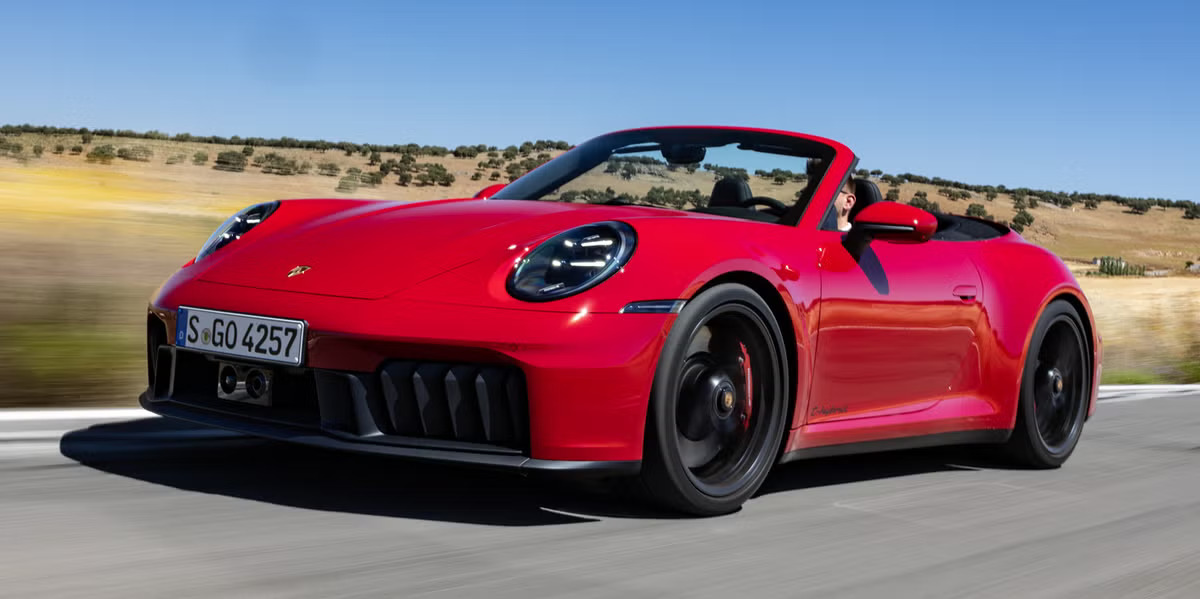
3. Porsche 911
The Porsche 911 is a rare example of a car that consistently draws admiration and attention without resorting to flamboyance or extreme styling. Its timeless design has evolved delicately over the decades, maintaining the classic silhouette that has made it an automotive legend. The 911’s smooth, rounded body and distinctive round headlights have become symbols of precision, performance, and heritage.
Unlike many cars that chase trends, the 911 exudes an understated elegance that appeals equally to car enthusiasts, collectors, and casual admirers. Its presence on the road feels like a nod to the golden age of sports cars, yet it offers cutting-edge technology and performance under the hood.
This continuity of design speaks volumes about Porsche’s dedication to maintaining the car’s identity while improving every generation’s handling, power, and comfort. The Porsche 911 isn’t just a pretty face; it is an engineering marvel built for spirited driving and exhilarating performance.
The rear-engine layout and finely tuned chassis create a driving experience that few other sports cars can match. This blend of heritage and innovation means that every 911 you see on the road carries decades of motorsport DNA, immediately commanding respect and attention.
What makes the 911 truly captivating is its ability to bridge generations. Older enthusiasts admire it for its historical significance, while younger drivers are drawn to its contemporary performance and prestige. The car has transcended mere transportation to become a symbol of refined taste and driving passion.
Whether parked at a luxury event or speeding down a winding road, the 911’s graceful design and audible presence make it impossible to overlook. It commands attention through quality and tradition rather than flashy gimmicks, earning admiration through consistent excellence.
Moreover, the Porsche 911’s adaptability contributes to its enduring appeal. With variants ranging from track-focused GT models to luxurious turbocharged editions, it caters to a wide range of preferences while maintaining the core traits that define the model.
This versatility ensures that the 911 remains relevant and desirable in any era, continually attracting new fans and reaffirming its status as one of the most iconic and attention-commanding sports cars in existence.
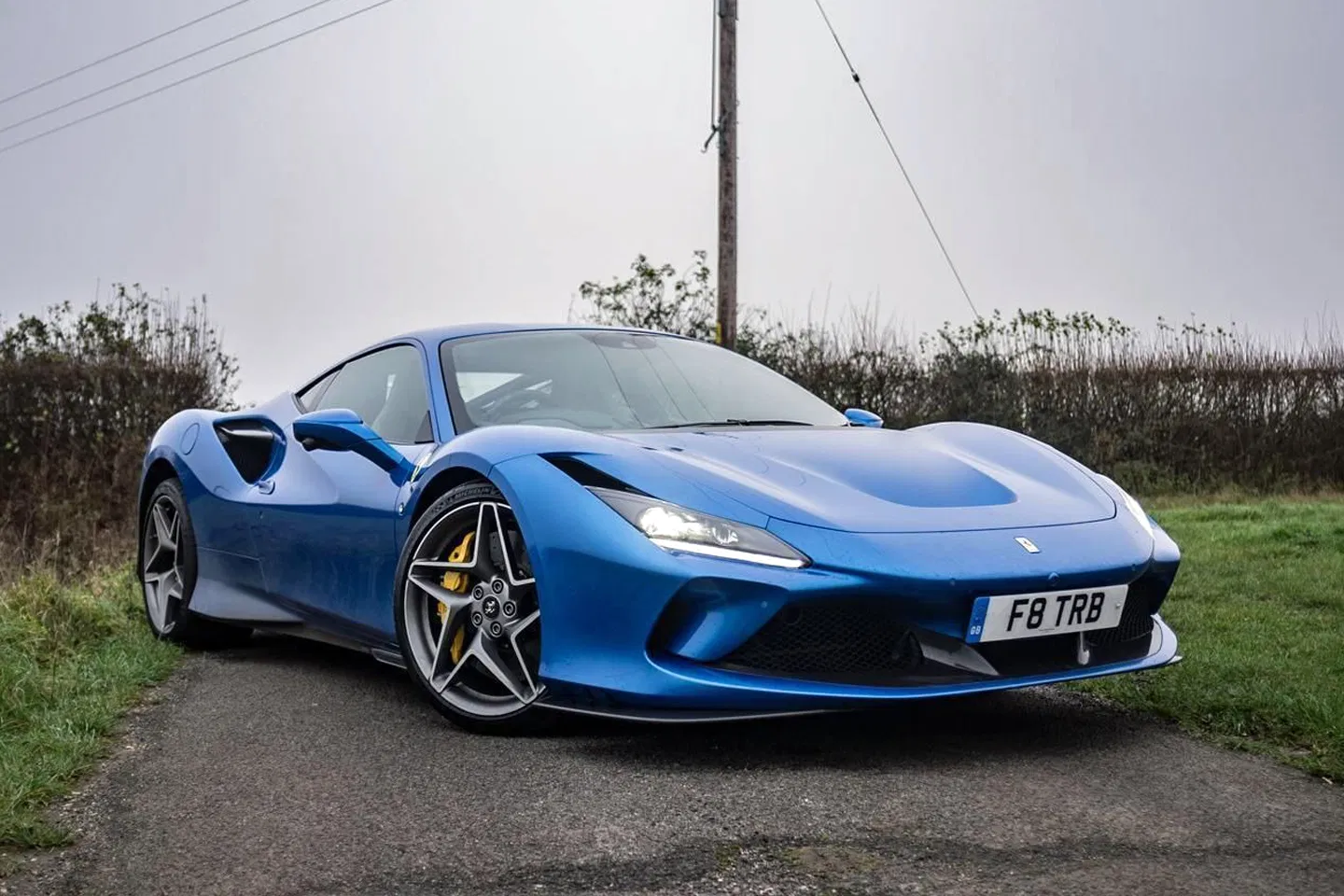
4. Ferrari F8 Tributo
Ferrari has long been the benchmark for automotive passion, performance, and design, and the F8 Tributo stands as a shining example of this legacy. Designed as a tribute to Ferrari’s legendary V8 engines, the F8 Tributo combines breathtaking aesthetics with blistering performance.
Its sleek, aerodynamic body is meticulously sculpted to channel airflow and maximize downforce, giving it a presence that is as purposeful as it is beautiful. Every curve and vent has a story, a function that contributes to the car’s track-ready performance and unmistakable Ferrari styling.
The aggressive front fascia, sculpted side intakes, and dramatic rear diffuser create a dynamic silhouette that demands attention from every angle.
Underneath the captivating exterior lies a 3.9-liter twin-turbocharged V8 engine that delivers around 710 horsepower, enabling the F8 Tributo to accelerate from 0 to 60 mph in just under three seconds. This level of performance is not merely impressive on paper—it translates into a visceral driving experience that thrills the driver and excites onlookers.
The F8’s exhaust note, a signature Ferrari roar, reverberates through streets and circuits alike, captivating ears and hearts. This auditory element is a crucial part of why the car attracts so much attention, as the sound itself signals extraordinary engineering and emotion.
The Ferrari F8 Tributo also benefits from the brand’s rich motorsport heritage, which adds layers of intrigue and admiration. Ferrari isn’t just a car manufacturer; it’s an icon of racing excellence and Italian craftsmanship.
Seeing an F8 Tributo on the road is like witnessing a piece of this living legacy, a symbol of speed, beauty, and passion that few other cars can match. This heritage elevates the car beyond its specifications and styling, making it a magnet for enthusiasts and casual observers alike.
Additionally, Ferrari’s approach to exclusivity plays a big role in the F8 Tributo’s allure. With limited production numbers and customization options through Ferrari’s Tailor Made program, every car is unique and a testament to its owner’s taste.
This exclusivity creates a sense of rarity that increases the car’s visual and cultural impact, ensuring that when an F8 Tributo appears, it is met with awe, curiosity, and often admiration. It embodies the perfect fusion of art and science, making it one of the most attention-commanding cars on the road today.

5. Jeep Wrangler
The Jeep Wrangler commands attention in a way that’s different from the typical flashy sports car or luxury supercar, but no less powerful. Its rugged, utilitarian design and storied history as an off-road icon make it a vehicle that is instantly recognizable and highly respected.
The Wrangler’s boxy shape, round headlights, and removable doors and roof harken back to a time when vehicles were built to conquer the wildest terrains, and this heritage still resonates strongly with owners and admirers.
It embodies freedom, adventure, and a connection to nature that many modern vehicles lack, making it a unique standout in urban and suburban settings alike.
What sets the Wrangler apart is its cultural significance and loyal following. It’s more than just a car; it’s a lifestyle symbol for those who value exploration and rugged capability. Whether navigating rocky trails or cruising through city streets, the Wrangler’s presence signals resilience and readiness.
This utilitarian toughness contrasts sharply with more refined vehicles, giving it a distinct personality that draws looks and respect. Its ability to be customized extensively—from lift kits to oversized tires and aftermarket accessories—also contributes to its unique and attention-grabbing aesthetic.
Moreover, the Jeep brand’s long history and association with military and recreational use give the Wrangler a legendary status. This connection to heritage and functionality adds depth to its visual appeal, making it more than just a vehicle but a part of American automotive folklore.
Jeep owners often form tight-knit communities, and the vehicle’s appearance at meetups and off-road events only reinforces its iconic status and visibility.
In today’s market, where SUVs and crossovers dominate, the Wrangler maintains a raw, authentic charm that appeals to a broad spectrum of buyers, from outdoor enthusiasts to city dwellers looking for something different. Its combination of practicality, nostalgia, and distinctive style guarantees that it never goes unnoticed.
The Wrangler’s ability to balance ruggedness with everyday usability ensures it remains a perennial attention magnet, standing out through a blend of heritage, personality, and functionality.
5 Cars That Get Ignored

1. Mitsubishi Mirage
The Mitsubishi Mirage is often the quintessential example of a car that tends to be overlooked, sometimes even dismissed outright by drivers and enthusiasts alike. Despite its role as an economical, practical city car designed to meet the basic transportation needs of budget-conscious consumers, the Mirage rarely inspires excitement or admiration.
Its compact size and unassuming styling often cause it to blend into the background in urban environments, where it shares the road with more visually striking or prestigious competitors.
The Mirage’s bland and somewhat outdated exterior design, with plain lines and minimal character, doesn’t invite a second glance and frequently leads to the vehicle being mentally filtered out by pedestrians and other drivers.
In many ways, the Mirage suffers from an identity crisis: it aims to be affordable and efficient but lacks the charisma or standout features that might elevate its presence on the street.
Under the hood, the Mirage is powered by a small, underwhelming three-cylinder engine that prioritizes fuel economy over power, resulting in modest acceleration and uninspiring driving dynamics.
While this setup appeals to those valuing economy above all else, it contributes to the car’s reputation as slow and underpowered, which further diminishes its appeal among drivers who desire some level of engagement or excitement from their vehicle.
The driving experience, often described as basic and somewhat numb, doesn’t help the Mirage carve out a distinctive space in the market. It’s a car that tends to disappear into traffic rather than stand out, making it easy for the average observer to simply overlook.
Moreover, the interior of the Mirage mirrors the exterior’s plainness. With hard plastics, minimal tech features, and a sparse cabin layout, the car feels cheap rather than simply economical. It lacks the refinement or clever design touches that might catch the eye or give passengers a sense of comfort and quality.
This utilitarian approach, while practical, doesn’t inspire emotional attachment or loyalty from owners or onlookers. The Mirage often becomes a car that people choose out of necessity rather than desire, reinforcing its status as a forgettable vehicle.
Finally, the Mirage’s reputation suffers from a lack of brand prestige or cachet. Mitsubishi, while a respected automaker, doesn’t hold the same aspirational value as many other brands in its segments, which affects how its vehicles are perceived in terms of desirability and social status.
In a world where cars often double as status symbols or lifestyle statements, the Mirage’s modest credentials and inconspicuous appearance consign it to the shadows. Despite fulfilling its practical purpose admirably, it remains a car that gets ignored, quietly doing its job without drawing attention or admiration.
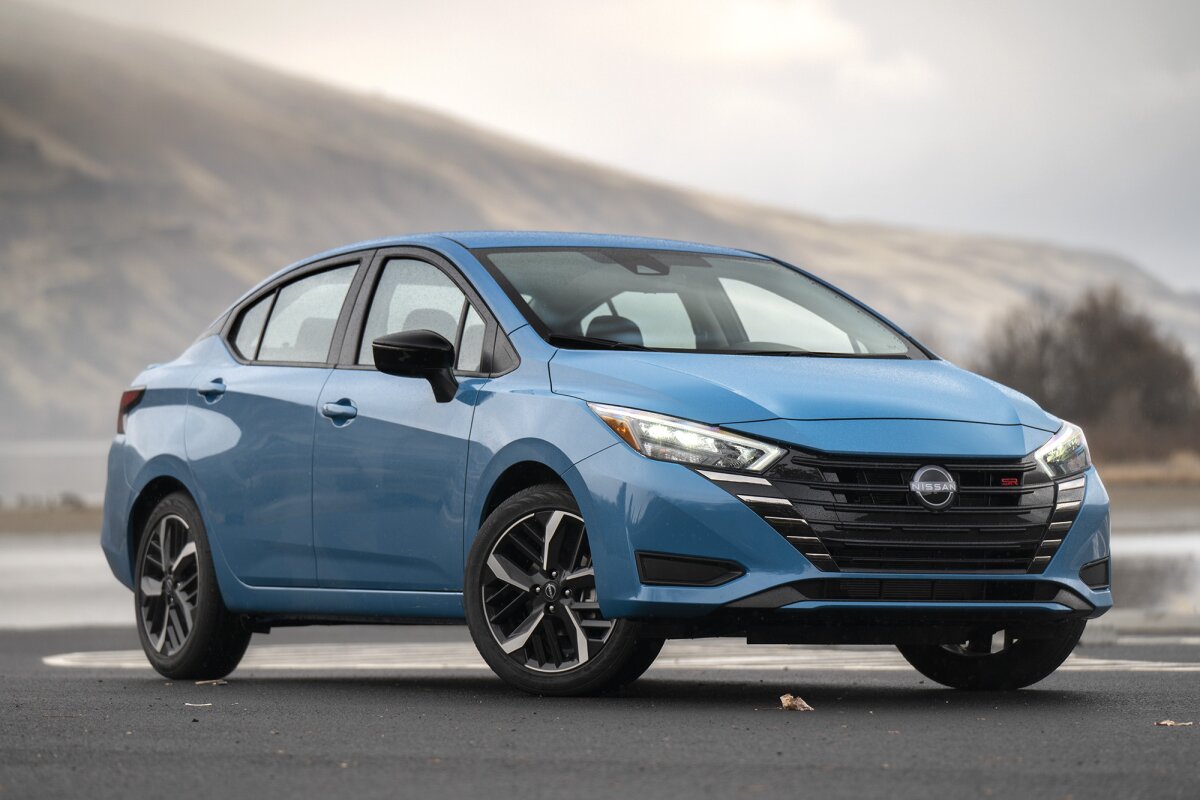
2. Nissan Versa
The Nissan Versa occupies a similar place in the automotive world as the Mitsubishi Mirage: a practical, affordable entry-level sedan that prioritizes value over excitement. This car is designed to meet the needs of budget-minded buyers, especially those seeking a no-frills daily driver that can reliably shuttle passengers with reasonable fuel economy and low ownership costs.
However, this focus on practicality has come at the cost of style, performance, and overall appeal, which has made the Versa a model that’s often overlooked in parking lots, on the road, and in automotive discussions. The exterior styling of the Versa has historically been uninspired, with bland, generic lines that fail to command attention or evoke emotion.
It’s a car that tends to disappear amidst a sea of more aggressively styled competitors, particularly in urban areas where aesthetics can influence social perception. Performance is another area where the Versa doesn’t generate much excitement. Its small four-cylinder engine offers modest power, enough to meet daily driving needs but rarely satisfying for those who crave a dynamic or spirited drive.
The transmission choices, often basic CVTs, contribute to a driving feel that many describe as dull or unengaging. This lack of driving excitement reduces the car’s ability to stand out, especially when compared to sportier or more refined compact sedans from rival brands. In a segment crowded with options, the Versa’s underwhelming performance becomes one more reason it slips under the radar.
Inside, the Versa’s cabin reflects its value-oriented approach. While recent models have made strides in upgrading interior materials and adding modern infotainment systems, the overall design remains basic and functional rather than inviting or luxurious.
The cabin layout and controls emphasize simplicity and ease of use, but they don’t inspire a sense of refinement or innovation that might draw attention. This functional interior meets the needs of practical drivers but doesn’t contribute to the car’s visibility or allure in a competitive market.
The Nissan brand itself, while generally respected, doesn’t lend the Versa the aspirational boost that might help it stand out. It’s perceived as a workhorse more than a statement vehicle. The Versa’s affordability and utilitarian focus mean it is chosen for rational reasons—budget, economy, and reliability—rather than emotional appeal or style. Consequently, despite fulfilling an important role for many drivers, the Nissan Versa remains a vehicle that gets largely ignored in traffic, conversations, and car culture.

3. Kia Rio
The Kia Rio is a subcompact car that, while improved significantly in recent years, still struggles to capture widespread attention or admiration compared to its more aggressively marketed or visually striking competitors. Kia’s dramatic transformation as a brand over the past decade has helped many of its models gain respect and recognition, but the Rio has often been overshadowed by flashier siblings like the Kia Stinger or the sporty Forte.
The Rio’s design language, while contemporary and clean, leans toward the conservative and safe side of styling, which can make it blend into the urban environment rather than stand out. Its modest proportions and subtle lines do little to turn heads, and it often gets mistaken for a lower-tier or entry-level model in the eyes of casual observers.
From a performance standpoint, the Rio offers an efficient and reliable driving experience, but nothing that excites or surprises. Its engines, typically modest four-cylinder units, provide adequate power for daily commuting but fall short of delivering thrills or dynamic driving engagement.
The chassis and suspension tuning prioritize comfort and predictability, which, while desirable to some buyers, further dulls the car’s ability to command attention. The Rio’s driving experience is dependable but unremarkable, contributing to its status as a vehicle that many might overlook or undervalue in the broader market.
Inside, the Kia Rio has made strides in terms of quality and technology, but still leans heavily on practicality over luxury or innovation. Its interior design is straightforward and user-friendly, with materials that have improved but rarely feel premium.
The infotainment system and driver assistance features are competitive for the segment but don’t stand out as groundbreaking or particularly memorable. This functional approach suits its target demographic, but doesn’t help the car generate buzz or passionate fanfare.
Finally, the Rio’s position within Kia’s lineup and the broader automotive landscape means it’s often overshadowed by vehicles that better balance style, performance, and value. While it appeals strongly to practical buyers seeking affordable transportation, it rarely excites or captivates the wider car community or general public. As a result, the Kia Rio quietly performs its duties without commanding attention, becoming one of those cars that go unnoticed on the streets despite being a solid, sensible choice.
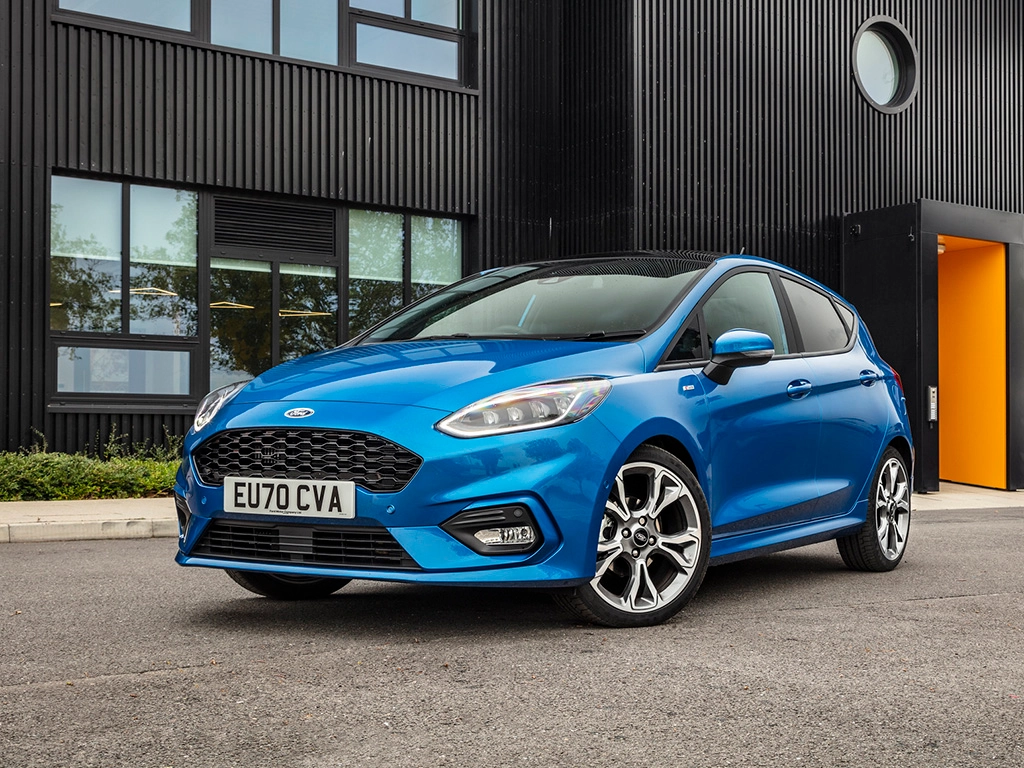
4. Ford Fiesta
The Ford Fiesta, once a popular subcompact choice in many global markets, has struggled to maintain a high-profile presence in recent years, especially in the United States, where it was discontinued. Despite a reputation for agile handling and a fun-to-drive character, the Fiesta often failed to capture the lasting attention or admiration of mainstream consumers.
Its exterior design, though relatively modern and sportier than some of its rivals, often got lost in the shuffle among a flood of similar-sized hatchbacks and compact cars. While it had its share of enthusiasts, the Fiesta’s styling didn’t quite reach the level of iconic or standout appeal necessary to command constant attention in crowded urban settings.
Performance-wise, the Fiesta was lauded for its nimble and engaging driving dynamics, but its modest engine options and relatively simple powertrains limited its appeal to those seeking outright performance or prestige. The small turbocharged engines offered decent power for the segment, but the car’s overall image remained firmly in the economy car camp rather than the sporty or premium space.
This middle-of-the-road perception made it a car that was appreciated but not necessarily admired, especially when pitted against more aggressively marketed or visually distinctive competitors.
Inside, the Fiesta featured an interior that was generally functional but didn’t excel in terms of refinement or technology. While the cabin was practical and offered decent ergonomics, the materials and layout were somewhat basic and lacked the sophistication or flair to inspire passion or stand out in a competitive segment. The user experience was serviceable and straightforward, appealing to practical buyers but failing to elevate the car’s profile.
Moreover, the Ford brand’s strategic shifts and changing market demands have led to the Fiesta’s reduced presence, further dimming its visibility and relevance. The car’s departure from key markets and the focus on larger SUVs and crossovers means it no longer benefits from broad exposure or continued development. As a result, the Fiesta has largely faded into obscurity, becoming a car that, despite its strengths, is often ignored by both new car buyers and car enthusiasts alike.
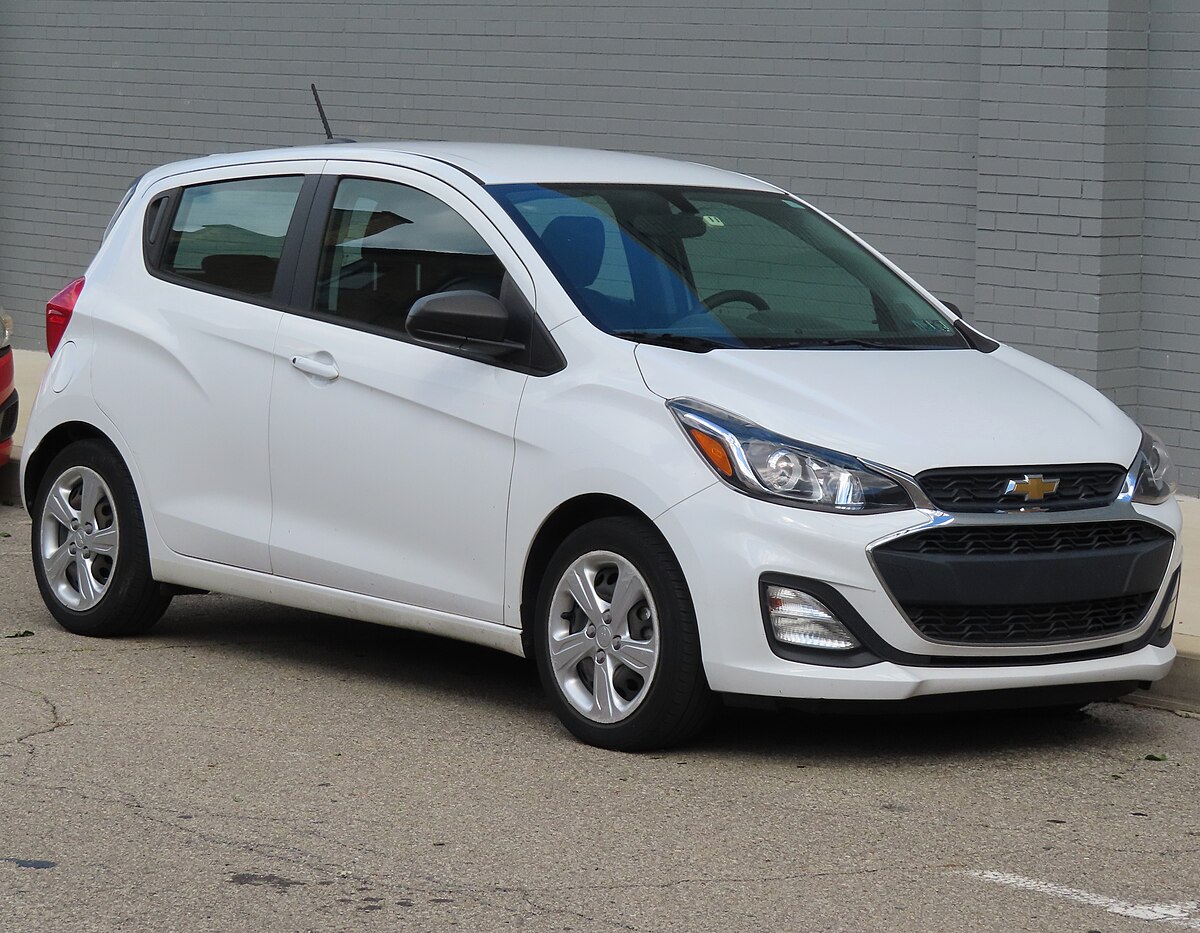
5. Chevrolet Spark
The Chevrolet Spark is one of the smallest and most affordable vehicles on the market, which unfortunately contributes to its frequent invisibility among the sea of larger, flashier cars on the road. Designed as an ultra-compact city car, the Spark’s minuscule dimensions and modest styling make it a practical solution for urban commuters but also an easy vehicle to overlook.
Its diminutive size, while an advantage in tight parking situations, reduces its road presence significantly, often causing it to fade into the background in mixed traffic environments dominated by SUVs, sedans, and crossovers. The Spark’s styling is simple and functional, with a design that lacks the boldness or flair necessary to grab attention or generate excitement.
Performance-wise, the Spark is equipped with a small, fuel-efficient engine that meets basic transportation needs but offers little in terms of acceleration, power, or driving engagement. This underwhelming performance profile further cements its status as a practical, no-nonsense choice rather than an aspirational or noteworthy vehicle. Its driving dynamics are tuned for comfort and economy rather than fun, which aligns with its target audience but doesn’t help it stand out in a crowded market.
The interior of the Chevrolet Spark is equally modest, with a focus on affordability and functionality rather than luxury or advanced technology. While newer models have improved in terms of infotainment and safety features, the overall cabin environment remains basic, with limited space and simple materials that underscore its budget-friendly positioning.
This lack of refinement contributes to the Spark’s underwhelming image and limited appeal beyond those seeking the lowest-cost option.
Lastly, Chevrolet’s brand strength in the compact car segment has historically been overshadowed by other models and categories. The Spark’s small size and economy focus don’t align with the current consumer trend toward larger vehicles, SUVs, and crossovers, which further reduces its visibility and desirability. Consequently, the Spark often goes unnoticed, quietly fulfilling its role as a practical urban commuter while being largely ignored by the broader automotive audience.
Also Read: 5 Engines That Never Burn Coolant and 5 That Always Need Top-Ups
The stark contrast between cars that get attention everywhere and those that get ignored speaks volumes about the complex interplay of design, performance, cultural symbolism, and market positioning in the automotive world. Vehicles that command attention are often those that transcend their primary function of transportation to become statements of identity and aspiration.
They evoke emotion and admiration through bold styling, powerful engines, historical legacy, or sheer uniqueness. Whether it’s the exotic aggression of a Lamborghini Aventador, the futuristic defiance of a Tesla Cybertruck, the enduring elegance of a Porsche 911, the passionate engineering of a Ferrari F8 Tributo, or the rugged authenticity of a Jeep Wrangler, these cars captivate onlookers by appealing to both primal instincts and cultivated tastes.
On the other hand, cars that get ignored are typically those that emphasize practicality, economy, and accessibility over flash and flair. The Mitsubishi Mirage, Nissan Versa, Kia Rio, Ford Fiesta, and Chevrolet Spark are all vehicles designed to serve the essential needs of mobility for millions around the world.
Their lack of attention-grabbing features doesn’t imply a lack of value; instead, it highlights a different set of priorities—affordability, efficiency, and reliability. These vehicles perform their duties silently and effectively, often forming the backbone of personal and family transportation. Their invisibility in the eyes of the public is less about failure and more about fulfilling a quiet, utilitarian role in a busy, diverse automotive ecosystem.
This divide also reflects how car culture and societal values shape perception. Attention-grabbing cars benefit from stories, histories, and personalities built over decades or even centuries. They are often symbols of success, adventure, innovation, or rebellion, appealing to our desire for distinction and excitement.
Meanwhile, ignored cars, despite their crucial roles, lack such narrative weight or emotional resonance in popular culture, leading to their modest presence in the public eye. This dynamic underscores the emotional and symbolic power cars hold beyond metal and mechanics—they become extensions of ourselves and reflections of our aspirations or pragmatism.
It’s also important to recognize that attention, whether positive or negative, is not the ultimate measure of a car’s worth. For many drivers, the perfect car is one that fits their needs, budget, and lifestyle, regardless of how much it turns heads. Vehicles that get ignored may not inspire awe, but they often provide indispensable service, comfort, and economy that enhance everyday life.
Meanwhile, cars that get attention often come with higher costs, greater maintenance demands, and exclusivity that put them out of reach for most. Each vehicle type plays a unique role, and both ends of the spectrum deserve respect for their contributions.
In the end, the interplay between cars that get attention everywhere and those that get ignored reveals the rich tapestry of automotive design and consumer choice. It highlights how aesthetics, performance, history, and utility influence our perceptions and interactions with vehicles.
Whether it’s a blazing supercar capturing the spotlight or a humble compact quietly doing its job, every car has a story and a purpose. This dynamic reminds us that the world of cars is as diverse and multifaceted as the people who drive and admire them. Recognizing and appreciating this diversity enriches our understanding not only of automobiles but also of the complex ways in which they intersect with culture, identity, and everyday life.
